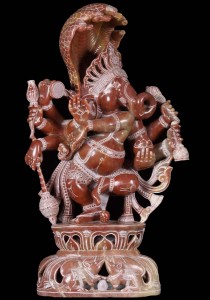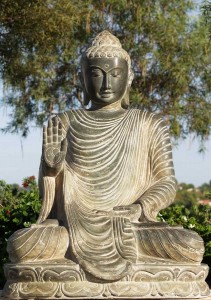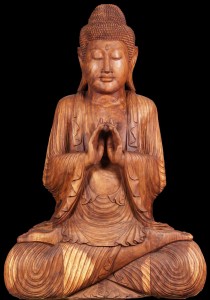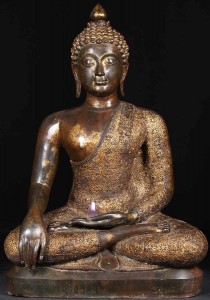
The Buddha is often depicted within art and sculpture holding many different poses or postures. A lot of times these poses include specific hand gestures as well as positioning of the legs. Many people wonder the meanings behind these certain hand gestures and seated positions. The Buddha is often seen with either his ankles tucked, called the Double Lotus position, or with one leg resting atop the other which is called a Single Lotus position. These seated positions are in combination with certain hand gestures called Mudras.
One such posture that is commonly seen is the Buddha sitting with crossed legs (Double Lotus) and both hands resting palms up upon his knees. This stance represents meditation and is the most common posture due to the Buddha’s enlightenment through meditation underneath the Bodhi Tree. This stance, called the Meditation Buddha, represents inner wisdom, emotional stability, and clarity of the mind.
Another important posture is that of the Buddha with legs crossed (Double Lotus), left hand resting face up within his lap, and right hand pointing to the ground with his palm facing towards him. This pose is regarded as the Buddha calling the earth as witness to the moment he reached enlightenment. This stance, called the Enlightenment Buddha, signifies gaining insight, achieving great character, and having self-discipline.
Here are a few more common postures of the Buddha:
Protection Buddha: The Buddha sits in either Double or Single Lotus position with right hand raised facing outward and left hand in the lap. This position represents having courage and offers the bearer protection against fear, delusion, and anger.
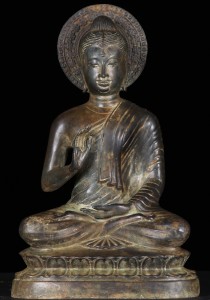
Teaching Buddha: The Buddha sits in a Double Lotus position with hands up at chest level. His hands form a circle by joining thumbs and index fingers with the right palm facing in and the left facing out. This position brings about wisdom, understanding, and finding the truth behind your life’s path.
Contemplation Buddha: The Buddha stands with legs together and both arms against the chest, palms in, and right hand on top of the right. This pose represents patient understanding.

